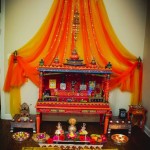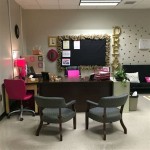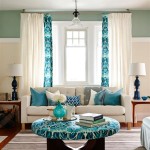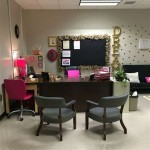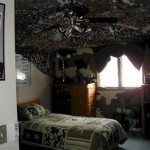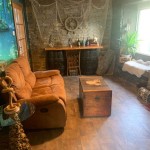Beautiful Dining Room Decor: Creating an Inviting and Functional Space
The dining room, often the heart of the home, serves as a gathering place for meals, celebrations, and conversations. More than just a space to eat, it should be an inviting and functional area that reflects the homeowner’s style and comfortably accommodates its intended use. Beautiful dining room decor involves careful consideration of various elements, from the foundational aspects like paint color and flooring to the finer details such as lighting, furniture selection, and decorative accessories.
Fundamental Elements: Color, Light, and Space
Establishing a solid foundation is crucial for any successful dining room decor project. This involves paying close attention to the room's existing architectural features and considering how to enhance them. The color palette, lighting scheme, and spatial arrangement are all essential factors that contribute to the overall ambiance and functionality of the dining room.
The choice of paint color significantly impacts the mood of the room. Lighter colors, such as creams, whites, and pale grays, can create a sense of spaciousness and airiness, making them ideal for smaller dining rooms. These neutral tones also provide a versatile backdrop for showcasing artwork and colorful dining ware. Conversely, darker hues like deep blues, emerald greens, or charcoal grays can lend a sense of drama and sophistication. These colors are best suited for larger dining rooms as they can visually shrink smaller spaces. Consider the amount of natural light the room receives. In rooms with limited natural light, it’s advisable to stick with lighter colors to maximize brightness. Regardless of the chosen color, selecting a high-quality paint with a durable finish ensures longevity and easy maintenance.
Lighting plays a pivotal role in setting the atmosphere and highlighting the dining area's focal points. A well-designed lighting scheme should include a combination of ambient, task, and accent lighting. Ambient lighting provides overall illumination, creating a comfortable and welcoming environment. Chandeliers, pendant lights, and recessed lighting fixtures serve as effective sources of ambient light. Task lighting focuses on illuminating specific areas, such as the dining table, making it easier to see while eating. A chandelier or pendant light positioned directly above the table is a common and effective task lighting solution. Dimmers are highly recommended for ambient and task lighting, allowing adjustment of the brightness to suit different occasions. Accent lighting highlights artwork, architectural details, or decorative accessories. Wall sconces, spotlights, and table lamps can be used to create focal points and add depth to the room. The strategic placement of accent lighting can dramatically enhance the visual appeal of the dining room.
Optimizing the use of space is essential for ensuring the dining room is both functional and aesthetically pleasing. Before selecting furniture, carefully measure the room and create a floor plan. This will help avoid overcrowding and ensure adequate space for movement. A general rule of thumb is to leave at least 36 inches of space between the dining table and the walls or other furniture. This allows guests to comfortably move around the table without bumping into anything. Consider the shape and size of the dining table in relation to the room. A round table is a good choice for smaller spaces as it promotes conversation and takes up less visual space. Rectangular tables are typically more suitable for larger dining rooms and can accommodate more guests. When arranging the furniture, prioritize functionality. The dining table should be the focal point of the room, with other furniture pieces arranged around it in a cohesive and balanced manner. Avoid blocking walkways or obstructing views. Consider incorporating built-in storage solutions, such as shelves or cabinets, to maximize space and keep the room organized.
Furniture Selection: Comfort, Style, and Functionality
The furniture chosen for the dining room not only dictates the room’s style but also directly impacts its comfort and functionality. Careful consideration must be given to selecting pieces that are both visually appealing and practical for everyday use. The dining table and chairs are central to the dining room, but incorporating other pieces like sideboards, buffets, and bar carts can enhance the room's functionality and storage capacity.
The dining table serves as the centerpiece of the dining room and should be chosen with careful consideration of its size, shape, material, and style. The size of the table should be proportional to the size of the room. A table that is too large will overwhelm the space, while a table that is too small will not adequately serve its purpose. The shape of the table can also impact the room's functionality and aesthetic. Round tables promote conversation and are ideal for smaller spaces, while rectangular tables provide more seating and are better suited for larger rooms. The material of the table should be durable and easy to maintain. Wood is a classic choice that adds warmth and character, while glass or metal tables offer a more modern and sleek look. Choose a table style that complements the overall decor of the room. A traditional dining room might feature a mahogany table with ornate carvings, while a contemporary dining room might feature a minimalist table with clean lines.
Dining chairs should be both comfortable and stylish, providing adequate support for long meals and blending seamlessly with the overall aesthetic of the dining room. Consider the height of the chairs in relation to the table. The seats should be approximately 12 inches below the tabletop, allowing ample legroom. Upholstered chairs offer superior comfort and can add a touch of luxury to the dining room. Choose a fabric that is durable and stain-resistant, especially if the dining room is used frequently. Armchairs can be added to the ends of the table for a more formal and sophisticated look. Mixing and matching chair styles can add visual interest to the room, but it is important to maintain a cohesive look by choosing chairs that share a common element, such as color, material, or style. Ensure the chairs can be easily moved and stored when not in use. Stackable or foldable chairs can be a practical solution for smaller dining rooms.
In addition to the table and chairs, consider incorporating other furniture pieces to enhance the functionality and storage capacity of the dining room. A sideboard or buffet provides ample storage for dishes, silverware, and linens. It can also serve as a serving surface for buffet-style meals. Choose a sideboard that complements the style of the dining table and chairs. A bar cart offers a convenient way to store and display barware and can be easily moved around the room to serve drinks. A display cabinet can be used to showcase fine china, glassware, or other decorative items. These additional pieces not only enhance the functionality of the dining room but also contribute to its overall aesthetic appeal.
Decorative Accessories: Adding Personality and Finishing Touches
The final layer of beautiful dining room decor involves adding decorative accessories that reflect personal style and create a welcoming atmosphere. These accessories, which include artwork, window treatments, table settings, and accent pieces, bring character and enhance the overall aesthetic of the space. Thoughtfully chosen accessories can transform a functional dining room into a visually appealing and inviting space.
Artwork plays a crucial role in adding personality and visual interest to the dining room. Choose pieces that complement the color scheme and style of the room. Large-scale artwork can serve as a focal point, while smaller pieces can be grouped together to create a gallery wall. Consider the subject matter of the artwork. Landscapes, still lifes, and abstract art are all popular choices for dining rooms. Hang artwork at eye level to ensure optimal viewing. When selecting artwork, consider the frame. A frame that complements the artwork and the overall decor of the room can enhance the visual impact of the piece. Mirrors can also be used to add visual interest and create the illusion of more space. A large mirror placed on a wall can reflect light and make the room feel brighter and more open.
Window treatments not only provide privacy and control the amount of natural light entering the room but also contribute to the overall aesthetic. Curtains, blinds, and shades are all popular choices for dining rooms. Choose window treatments that complement the color scheme and style of the room. Light and airy curtains can create a sense of spaciousness, while heavier drapes can add a touch of drama and sophistication. Consider the level of privacy needed. Sheer curtains or blinds allow natural light to filter through while still providing some privacy. Blackout curtains are ideal for blocking out light and ensuring privacy. Roman shades and roller shades offer a clean and modern look and can be easily adjusted to control the amount of light entering the room.
Table settings are essential for creating a beautiful and inviting dining experience. Choose dinnerware, glassware, and silverware that complement the style of the room and the occasion. For formal occasions, opt for fine china, crystal glassware, and sterling silver silverware. For more casual occasions, choose durable and easy-to-clean dinnerware, such as stoneware or porcelain. Consider the color and pattern of the dinnerware. White dinnerware is a classic choice that complements any decor, while patterned dinnerware can add visual interest to the table setting. Layering different textures and materials can create a more visually appealing table setting. Add a tablecloth or runner to protect the table and add a touch of elegance. Use placemats to define individual place settings and add a pop of color. Centerpieces can add a focal point to the table and create a festive atmosphere. Fresh flowers, candles, or decorative objects can all be used to create a stunning centerpiece.
:max_bytes(150000):strip_icc()/25BeautifulDiningRooms1-590689405f9b5810dca41265.jpg?strip=all)
25 Beautiful Dining Rooms

7 Amazing Dining Room Ideas In House Beautiful That You Will Love

85 Best Dining Room Ideas Designer

Modern Dining Room Ideas For Beautiful Gatherings Jane At Home

The 15 Most Beautiful Dining Rooms On Sanctuary Home Decor

Dining Room Table Ideas 15 Easy Decorating And Styling

Family Home With Sophisticated Interiors Bunch An Interior Design Luxury Hom Beautiful Dining Rooms Room Modern Wall Decor

Discover Beautiful Dining Table Decor Ideas For Every Season

106 Designer Dining Room Ideas For Every Size And Aesthetic

85 Best Dining Room Ideas Designer
Related Posts
